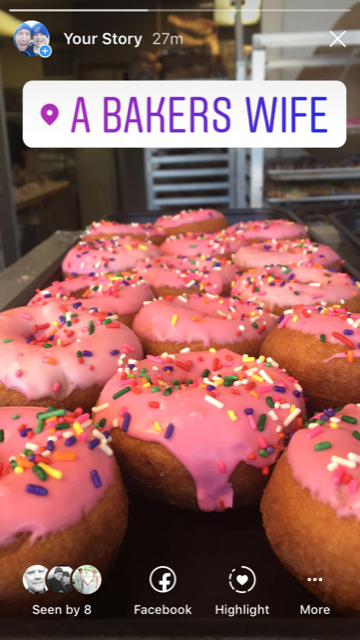An interesting shift is going on with the second-most popular social network in the U.S.
Instagram is now all about “stories.”

Consider the stats:
- By last count, Instagram Stories now has 300 million daily active users. That’s more users than Reddit, Twitter, Tumblr and LinkedIn.
- Stories have also reportedly increased the time users spend on Instagram, with an average of 32 minutes per day for those users under 25 years old, and 24 minutes for users 25 and older.
Instagram has also introduced a host of tools and features that make it much more attractive from a brand point-of-view in the last six months to a year:
- Notably, Instagram introduced “Story Highlights”, where you can create branded graphics for your page and save your stories permanently by category.
- “Swipe up” feature–for verified business account with 10,000 or more followers. This gives brands the ability to drive traffic to owned web properties and sites
- Enhanced metrics–Instagram now offers a host of in-app metrics for Stories including impressions, engagements, taps forward, taps back and exits.
Let me get this straight: more people are using Instagram Stories, users are spending more time there, and Instagram is making the platform more attractive for brands to play there.
So, why haven’t brands been more actively using Stories so far?
A few big factors are to blame:
- Staffing. Many people are surprised to hear how some of the biggest brands have pretty darn small social media teams. I can attest–I work closely with many of these brands in the Twin Cities! Not all are flush with 10-plus person teams. Much more common is the social media team of 2-3–for a Fortune 500 company, that’s not big. And, in some instances, you’ll find larger companies with social media teams of one! So, creating 3-5 pieces of fresh, new (and in many cases, interactive) content for Instagram 2-3 times a week simply isn’t feasible. Not without outsourcing it to agency or consultant partners–which can also be tough since sourcing content is much easier when you’re within the walls of the company you’re representing.
- Brand governance. Because Stories is more of a “real time” play, content often needs to be created and shared in minutes. This isn’t exactly conducive to onerous corporate brand governance processes which can take weeks to approve content. There are ways around this–for instance, capturing content at an event, getting brand approvals and posting at a later date. But, as we all know, timeliness counts for a lot, and once you remove that piece of the puzzle, your “Stories” content can and will suffer.
- Engagement looks different on Stories. We’ve trained brands to look for and bask in the immediate gratification of likes, comments and shares. But, Stories operates a little differently. You’re typically not going to see bawdy engagement numbers here. And, you don’t see any engagement numbers publicly–and I think that turns some brands off (or, at least it has so far). As brands adapt to the “Storification” of the web, we’ll see this mindset change. But, right now, I think this is a big part of what’s holding brands back.
The fact remains: Instagram is trending toward a “story first” platform. Sure, posts in the feed will still be valuable, but so many more people are using Stories–and they’re spending more time there. Just look at the jump in usage we’ve seen in the last 12 months. Given the way people are using social right now, I don’t see that trend line changing any time soon.
Time to figure out how your brand can participate in Stories and work around the challenges listed above.
Get to it.

0 Comments